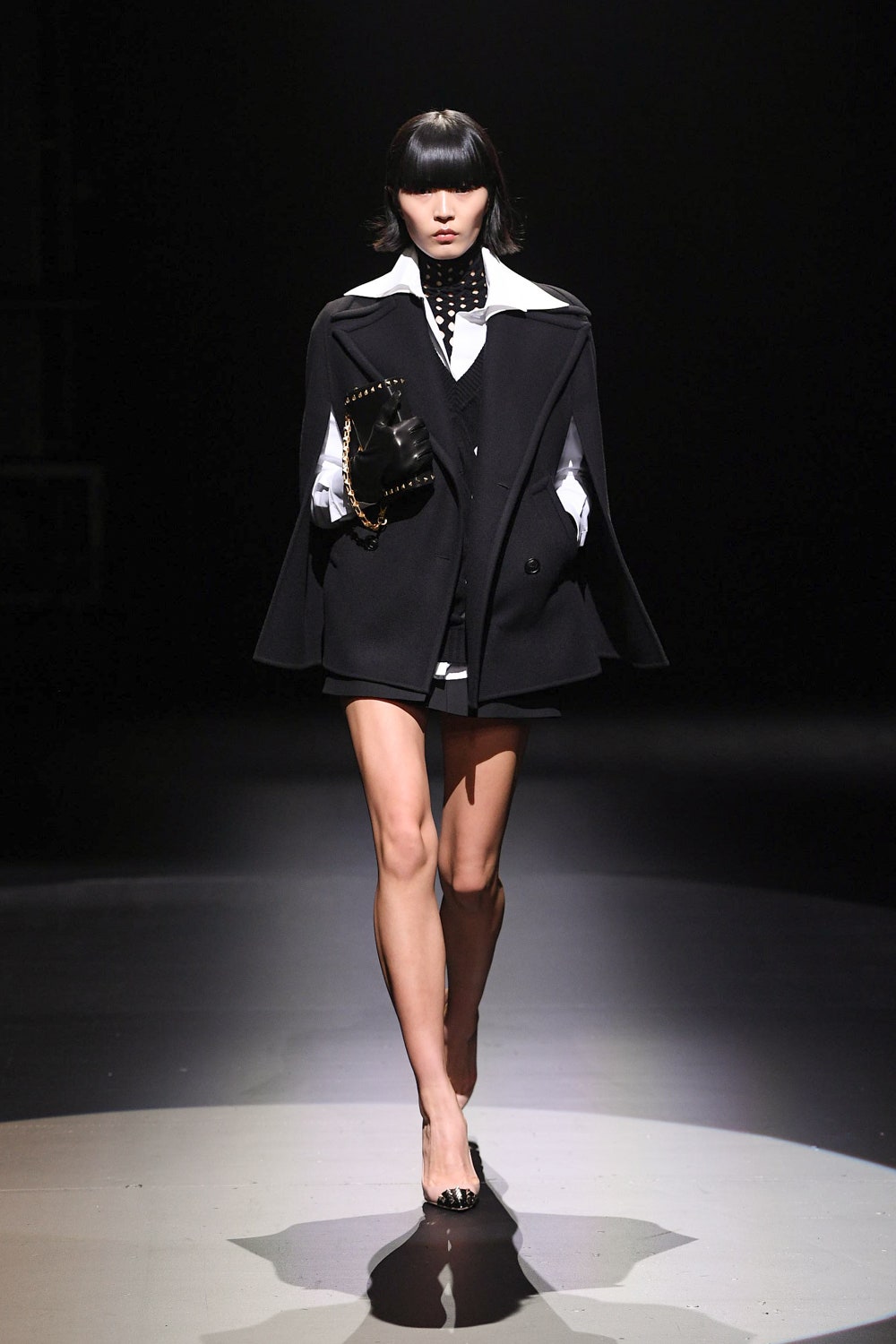
If last year’s thematic rising for fall was a sense of dystopian premonition, then this year’s is one of rebellious reckoning. Garbs have become shorter, sharper, readier than in its predecessor, one that delivered droves of sorrowful whimsy.
Today, Pierpaolo Piccioli presented his latest breath-taker for the Italian house of Valentino. His country has been ravaged by the pandemic, almost a year to the day since it became an epicentre and saw a devastatingly high casualty toll. Like most Italians, the designer has been flattened by the mood, so he wanted to iterate a new romance for this anniversary.
“I wanted the ésprit couture to be clearly felt in the collection but without any hint of nostalgia or redundancy.” He said in a post-show interview.
The location Piccioli chose was hauntingly appropriate. An empty Piccolo Teatro in Milan, dimly lit with only localised spot lights and the echoing notes of English singer Cos1ma with her ghostly version of Nothing Compares 2 U. As a digital presentation (as most shows have been this season) it was achingly temporal. Unique in space and time. Present and prolific.
It begins with the silhouette of a cropped woollen cape. The strut of bare legs. The iridescent white of an elongated collar. A sharp jaw. An even sharper fringe. This could be Piccioli’s protagonist. If he believed in fashion-show narrative. For him, it’s the collection that writes the story. Intricately crafted works that quite literally weave the only context required.
That doesn’t forgo external inspiration, however. His muse this season is of an artistic renegade. One that formed his uprising of perfectly pressed punks, resisting oppression in fashion most splendid. He noted the contemporary artist Lucio Fontana. A 1940s sculptor and installationist, famed for his theory of Spacialism that he viscerally employed through slashing canvases, who was both provocative and polarising. A punk of his time. Of his tagli (cuts) series, Fontana explained it was to “give the viewer the impression of spatial tranquility, of cosmic rigour, and of infinite serenity.”
Piccioli lends this technique to separates throughout the collection. In the form of fishnet sleeves, open argyle patterns and floral laser cuts. Their delicacy offering a literal window to the piece below. Add to this his repetition of black over white over black (for example, a black turtleneck lies beneath a white shirt that lies beneath a black vest that lies beneath a checkerboard coat…) and the ensembles begin to forge a trickery that plays with dimension, to a kind of infinite Droste effect.
If you’re to separate the layers, however, each piece is irresistible. Piccolo’s mastery for fine detail proceeds him. Valentino has long been known for exquisite minutiae – employing some of the most established ateliers in the country – meaning even the most simplistic of items are worthy of investment. This season it might be the perfectly cut, long-line black pea coat or the doily-ruffled shirt with its dramatic double collar. Or it might be the white brushed-wool cape with its desperately pretty braid seams. Or it might be the painted gold collegiate knit with its matching ruffle mini-skirt.
Casting the collection as the star is a vulnerable act from Piccolo. One he says is “radical”. His almost exclusive use of short hemlines and bare legs this season is both a departure and in jarring contrast to the Fontana-esque tagli and multi-layers of the ensembles’ uppers. It’s a light and shade – an armour of fashion precision slashed by human exposure. It’s fluid, fragile and fierce all at the same time.
Like Fontana, Piccioli’s art achieves a dramatic spacial tranquility. A serenity borne from unapologetic individualism, from breaking through – even literally. Perhaps finding romance in rebellion is an ultimate sign of our times, that punkery is taking its most stylish turn. If so, we’ll all join the movement.








